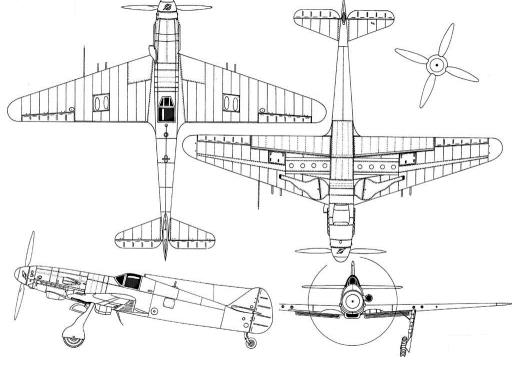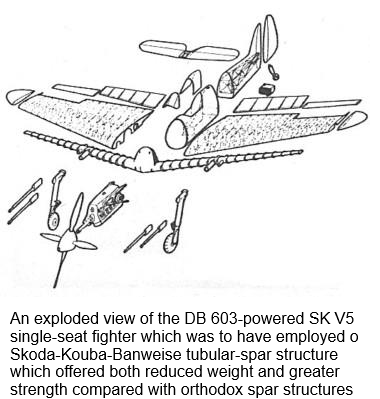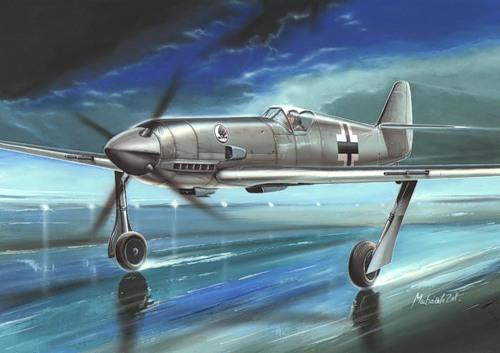After the successfull design V4 ( ordered to series-built under the designation Sk.257) Otto Kauba designed this fighter SK V5 with DB 603 engine . But RLM did not support the project ,
| Type |
Single-seat fighter , project , |
| Engine |
|
| Dimensions |
Length , height , span , wing area , |
| Weights |
Empty , loaded , max. take off weight |
| Performance |
Max.. speed , cruising speed , range , endurance , service ceiling , climb |



Kauba had several more ambitious projects on the drawing boards, one of which was the SK V5 single-seat fighter which, essentially a scaled-up SK V4 and intended to out-perform the Focke-Wulf Fw 190 in every respect, was intended to be powered by a 1,750 hp Daimler-Benz DB 603 liquidcooled engine. A maximum speed of 475 mph (765 km/h) was anticipated for the SK V5 which employed an unusual form of wing construction, this being known as the Skoda-KaubaBanweise tubular-spar structure and comprising normal ribs built up on a single tubular-type spar which stretched from wing-tip to wing-tip, the forward bulkhead and engine firewall to which the engine bearers were attached forming an integral part of the spar. This method of construction was claimed to offer both an increase in structural strength and a reduction in structural weight, and the Focke-Wulf organisation evinced interest at a late stage in the war, considering the introduction of the tubular spar in the Fw 190D and Ta 152 fighters. Unfortunately, although highly promising, the SK V5 progressed no further than a series of wind tunnel models and a full-scale mock-up as the RLM felt the development of an entirely new piston-engined fighter to be wasted effort at a time when emphasis was being placed on jet fighters.


